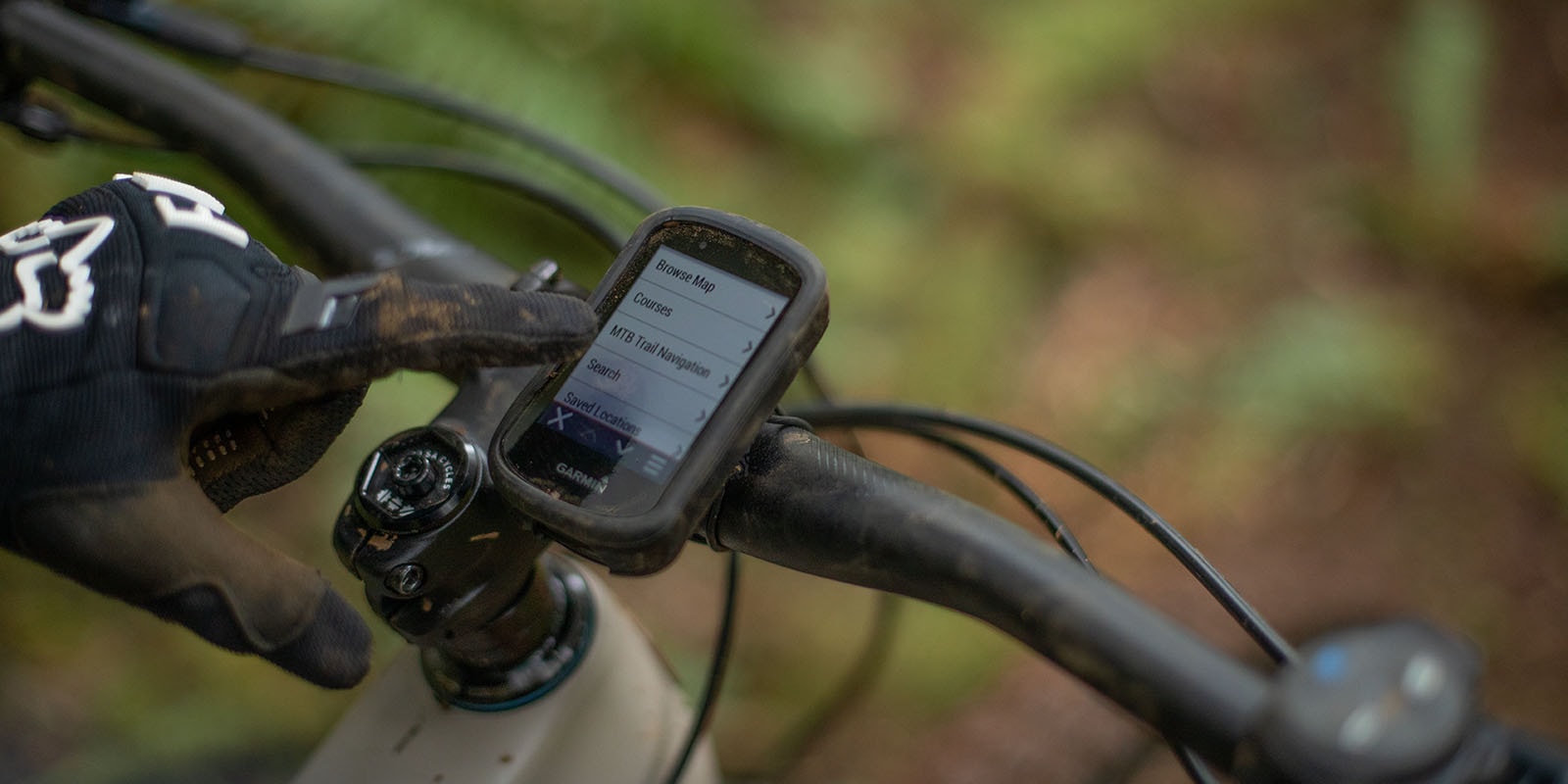A lot of cyclists are curious about their metrics—even if it's just how far or fast they ride. Much like the dashboard display in a car, a handlebar-mounted bike computer can tell you all sorts of things about your ride, even performance data like cadence and power. Many also offer navigational capability like turn-by-turn directions for your route.
You have many choices when deciding the best way to get your cycling feedback. And the pace of technological innovation means even more options. Instead of geeking out on every possible feature, this article offers an overview to help narrow your choices.
You have three options for bike-ride data and navigation:
- Smartphone with a cycling app: an affordable way to get basic feedback, but battery life can be an issue
- GPS-enabled fitness tracker or watch with cycling functions: ideal for multisport use
- Bike computer on your handlebar: Great for serious road and trail riders, they have a long battery life for long rides, a big screen and a cycling-specific interface.
Do You Even Need a Bike Computer?
If you're really into cycling, especially at a competitive level, or you regularly do long training rides and want a full array of data relating to those rides, then the answer is "yes" because you're precisely whom bike computers were created for. However, the thing in your hand (your phone) or the gadget on your wrist (if it's a fitness tracker) can also provide feedback about your rides. Both of those options can save some dollars and might give you all the data you need.
Using Your Smartphone as a Bike Computer
Almost any GPS-enabled phone can run a third-party cycling app. Strava and Mapmyride are two well-known options, though there are others. These apps can provide performance data, help you navigate, and then allow you to download your data later to analyze. They also allow you to share data and routes with friends and compare your rides with others in the online community. The app itself is typically free, though that limits you to basic functions like logging mileage and routes you ride. To access a more robust set of features, you need a subscription.
Note: A lot of riders also use phone apps with their bike computer or fitness tracker, so it's worth your time to check out several cycling apps. Also look at the apps provided by fitness-tracker and bike-computer brands, which provide much of the same functionality (along with device setup and customization).
If you decide that a phone with an app will meet your needs, then you'll need a bike phone mount to attach your phone to your bike's handlebar.
One argument against using a phone as a bike computer is that providing ride metrics and navigation info consumes a lot of battery power. As phone batteries improve, this is less of an issue, but batteries in bike computers and fitness trackers will almost surely last longer. Some people also forgo this type of phone usage because they view preserving its battery power as a safety imperative. They prefer to minimize their risk of losing the ability to call for help in the event of a crash or a mechanical breakdown.
Using a Fitness Tracker as a Bike Computer
A lot of GPS-enabled fitness trackers have a cycling mode that offers performance feedback and navigation aid. If you enjoy many activities and nerding out on each one, this is a great option. It'll already be on you wrist, too, so no handlebar mount required. (That said, that also means you won't have a nav screen there.)
For shopping tips, check out How to Choose a Fitness Tracker. For a rundown on some of the top models, read Staff Picks: Best Fitness Trackers.
Using a Dedicated Bike Computer
Versatility is a virtue but having purpose-built technology like a dedicated bike computer can give you the most precise data and the widest range of metrics. Most also offer large customizable displays and extended battery life for long rides (or races). As is true with any high-tech gear, paying more gets you more powerful processing, a more sophisticated user interface and more features, which can include the following:
Key Bike Computer Features
Wireless: In the past "wired vs. wireless" was a key distinction, but almost all bike computers now communicate wirelessly (with added sensors or a power meter, a phone, a fitness tracker or your laptop). Most work with many communication protocols, including Bluetooth, so this isn't likely to be a shopping consideration.
Smart device notifications: When paired with a compatible smartphone, bike computers with this feature allow you to send and receive notifications from text messages, phone calls, social apps and more.
GPS tracking: Only the most basic (most affordable) bike computers won't be GPS enabled. Global Positioning System (GPS) monitoring underlies a range of data, including distance, speed, elevation and navigation functions. The most sophisticated (most expensive units) connect to multiple GPS satellite systems for fast, precise tracking.
Cycling functions: Most units offer baseline data like speed and distance. Advanced units track things like elevation, cadence and power. Adding special sensors to monitor key data improves accuracy, and many bike computers are also sold in a bundle that includes those sensors. (Bundle prices are lower than buying items separately.)
Navigation: More affordable units provide basic tracking and alert you when you're off course. The most sophisticated units offer similar functionality to car navigation systems, where you can enter a destination and get turn-by-turn guidance. The underlying basemaps for the navigation systems also vary, with the best ones found in the top-tier units.
Mountain biking functions: The biggest benefit of this feature is connectivity with Trailforks, a leading app that provides trail information and navigational data. Mountain-biking metrics include things like jumps, air time and flow (smoothness of your descent).
Display size and quality: Display quality correlates with price. Affordable units have black-and-white displays, while the most sophisticated units have crisp touch-screen color displays. Most brand's bike computer apps allow you to customize the display, including what data is shown and how that data appears.
Solar-powered: Some devices have built-in solar charging to boost the computer battery.
Heart rate monitor (HRM) integrated: These provide cardio and training data on par with the most sophisticated fitness trackers. You'll need to connect to either a heart rate monitor chest strap or a fitness tracker with a wrist-based sensor to feed heart rate data to your bike computer.


